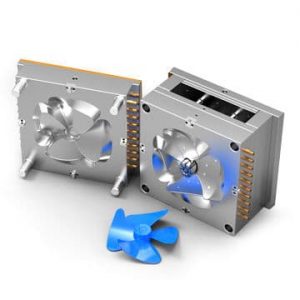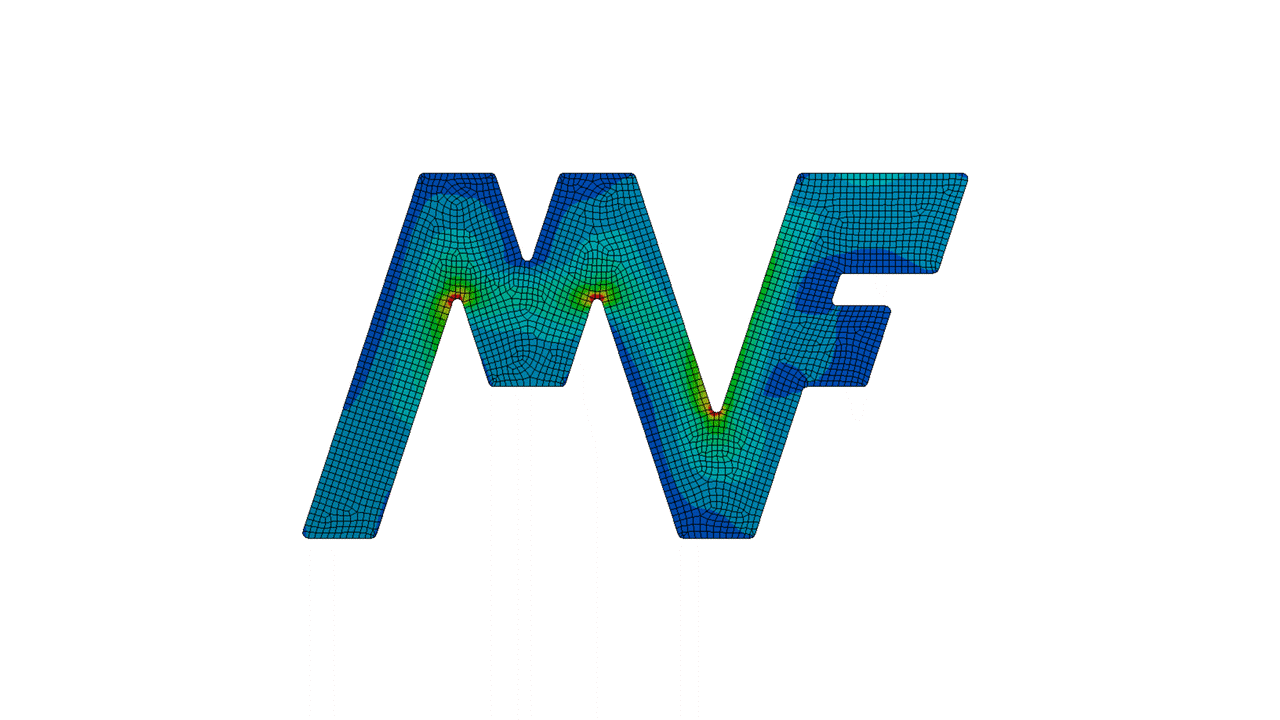Mold analysis and molding process simulation:
 What mold and machine workshops often do not usually consider is the principled execution of an engineering process. Below, the main steps of mold design and analysis as well as modeling of the molding process are explained. Note that the difference between a good template and a bad template can be in the execution or non-execution of any of the following steps.
What mold and machine workshops often do not usually consider is the principled execution of an engineering process. Below, the main steps of mold design and analysis as well as modeling of the molding process are explained. Note that the difference between a good template and a bad template can be in the execution or non-execution of any of the following steps.
Structural analysis:
Once the product geometry is formed, it can be transferred to other software such as Encysis or Abacus for all structural specifications, such as thickness distribution, to perform structural analysis. Structural analyzes are performed to evaluate the product’s resistance to external loads such as falls, pressures, and…
Fluid analysis:
At the same time as examining the structural strength of the product, it is necessary to ensure the correct filling and distribution of the fluid in the container as well as to predict the behavior of the container and the fluid. To do this, computational fluid dynamics software or CFD is used.
There are different types of industrial molds depending on the part they are going to produce. In fact, it is the production of the part that determines the type of mold. Bonyan Sanat Benomousi Company is proud to be your partner in designing and manufacturing industrial molds.
Design of plastic, rubber, foam, and pneumatic injection molds :
 Although the conversion of metal parts to polymer has been widespread for several years, there are still many problems and challenges in redesigning and producing these parts. One of these challenges is to ensure the strength and durability of parts produced with new materials. Structural analysis is essential for the production of quality polymer parts. To study more accurately and more comprehensively analyze the behavior of these materials, it is necessary to properly simulate their production process. For example, the direction of the fibers when injecting plastic is very important in the mechanical behavior of the structure.
Although the conversion of metal parts to polymer has been widespread for several years, there are still many problems and challenges in redesigning and producing these parts. One of these challenges is to ensure the strength and durability of parts produced with new materials. Structural analysis is essential for the production of quality polymer parts. To study more accurately and more comprehensively analyze the behavior of these materials, it is necessary to properly simulate their production process. For example, the direction of the fibers when injecting plastic is very important in the mechanical behavior of the structure.
Reaction injection molding simulation – foam molding
Design of various types of metal molds
- Design of various types of metal molds: blank, forging, bending, cutting, knocking, stretching, low, and Heming
- Mold loading and unloading, mold design process steps
- Design and manufacture of aluminum die-cast molds
Design of progressive templates form stretching
Design and manufacture of aluminum die-cast molds
Advantage of design with engineering software:

- Observe the filling and conversion behavior of the material in the mold before making the mold
- Material consumption optimization
- Determine the proper arrangement of holes and the position of the blades
- Correction of problems related to the interference of bridges, shoes, flywheels
- Analysis of strength and durability of parts and molds
Softwares :
- ANSYS PolyFlow:
Many R&D teams in molding plants use this software to design and optimize processes such as extrusion, thermal forming, pneumatic molding, glass forming, wire and fiber stretching, and concrete forming. . Design engineers use this software to reduce manufacturing costs and increase quality to reduce the production of physical samples. Read more about polyflow. - MoldFlow:
Software for simulating the plastic injection process and designing plastic injection molds. - Moldex3D:
Simulation of various molding processes - SOLIDWORKS:
Complete software that in addition to many capabilities in the field of CAD has specialized modules for the molding process.












